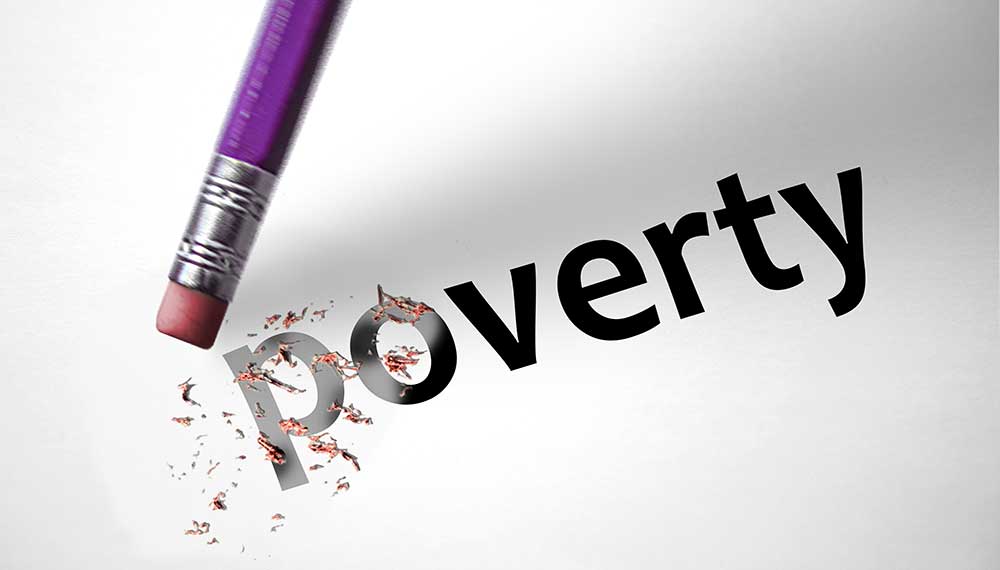A new study released by the Making Action Possible Dashboard for Southern Arizona (MAP Dashboard) examines five cities’ efforts to address regional poverty, with useful lessons for Tucson’s own poverty reduction initiatives.
The paper, “A Multi-City Comparison of Poverty Reduction Strategies: What Can Tucson Learn from Other Cities?” identifies strategies and organizational partners used by other cities. In each case, researchers studied the effectiveness of community stakeholders’ collaborative action to reduce unemployment, homelessness and hunger.
The study builds on research collected for Mayor Jonathan Rothschild’s Poverty Commission (2012 – 2014) and was conducted by Brian Mayer, Ph.D., an associate professor in the University of Arizona College of Social and Behavior Sciences School of Sociology, and Julie Grace Smith, M.S., a doctoral candidate in the School of Sociology.
From 40 cities with anti-poverty initiatives, five cities/counties were selected as case studies based on similarities to Tucson “in terms of population, official poverty rate, racial/ethnic diversity, government structure, and economic makeup (unemployment rate and primary industrial sectors)”(Mayer). Subject cities included Rochester, NY; Kalamazoo, MI; Norfolk, VA; Springfield, MO; and Nashville, TN.
The paper studies each city in detail, from the precipitating causes and formation of new anti-poverty initiatives, the stakeholders involved and the strategies used. In all five cases, “cities adopted a collaborative model that included both municipal representatives, the local nonprofit community, and to a slightly lesser degree the for-profit private sector.”
A key finding noted by Mayer and Smith is the importance of inclusiveness in the collaborative process. The legitimacy of resultant proposals hinged largely on the inclusion of diverse voices, including elected officials, nonprofit stakeholders and business leaders; “diversity in representation of interests, resources, and strategies was universally seen as essential for determining what regionally-specific antipoverty strategies should be developed and prioritized.” The private sector, in particular, was noted as “essential to the long-term success of these antipoverty initiatives,” due to its potential financial support of key programs and its influence on strategy development.
When comparing Tucson to the five cities studied, the study authors found that Tucson’s city, nonprofit and private sector stakeholders have worked together on poverty reduction strategies in a fashion similar to the subject cities. They note, however, that longer-term success resulting in policy implementation and action on strategies developed through the collaborative model will require substantial commitment from participants and strong leadership from elected officials.
“This research provides an empirical foundation for what we know anecdotally to be true: moving the needle on poverty and other economic issues in Tucson and Southern Arizona requires the collaboration of our elected officials, the business community and nonprofit and civic leaders,” said Mayer. “The MAP Dashboard continues to be a powerful platform for presenting new information, like this research from the University of Arizona, and starting great conversations about how we, as a community, can work together to measurably improve quality of life for all Southern Arizonans,” said MAP’s director Jennifer Pullen.
About the MAP Dashboard: MAP– Making Action Possible for Southern Arizona, and referred to as the MAP Dashboard, is a partnership with the University of Arizona’s Eller College of Management, the Community Foundation for Southern Arizona (CFSA), and the Southern Arizona Leadership Council (SALC). The MAP Dashboard Project was created to measurably improve Southern Arizona through data-driven collective civic action and education. University of Arizona’s Economic and Business Research Center (EBRC) in the Eller College built and maintains the MAP Dashboard website ensuring the accuracy and timeliness of all information presented on the MAP. The MAP Dashboard Project provides our region’s first common set of indicators in a single, easy-to-access source of reliable and current information. That information is available at www.mapazdashboard.arizona.edu or www.mapazdashboard.com.
MAP Contact: Jan Howard, O: 520-795-1566, C: 520-245-7302 jan.howard@strongpointmarketing.com





